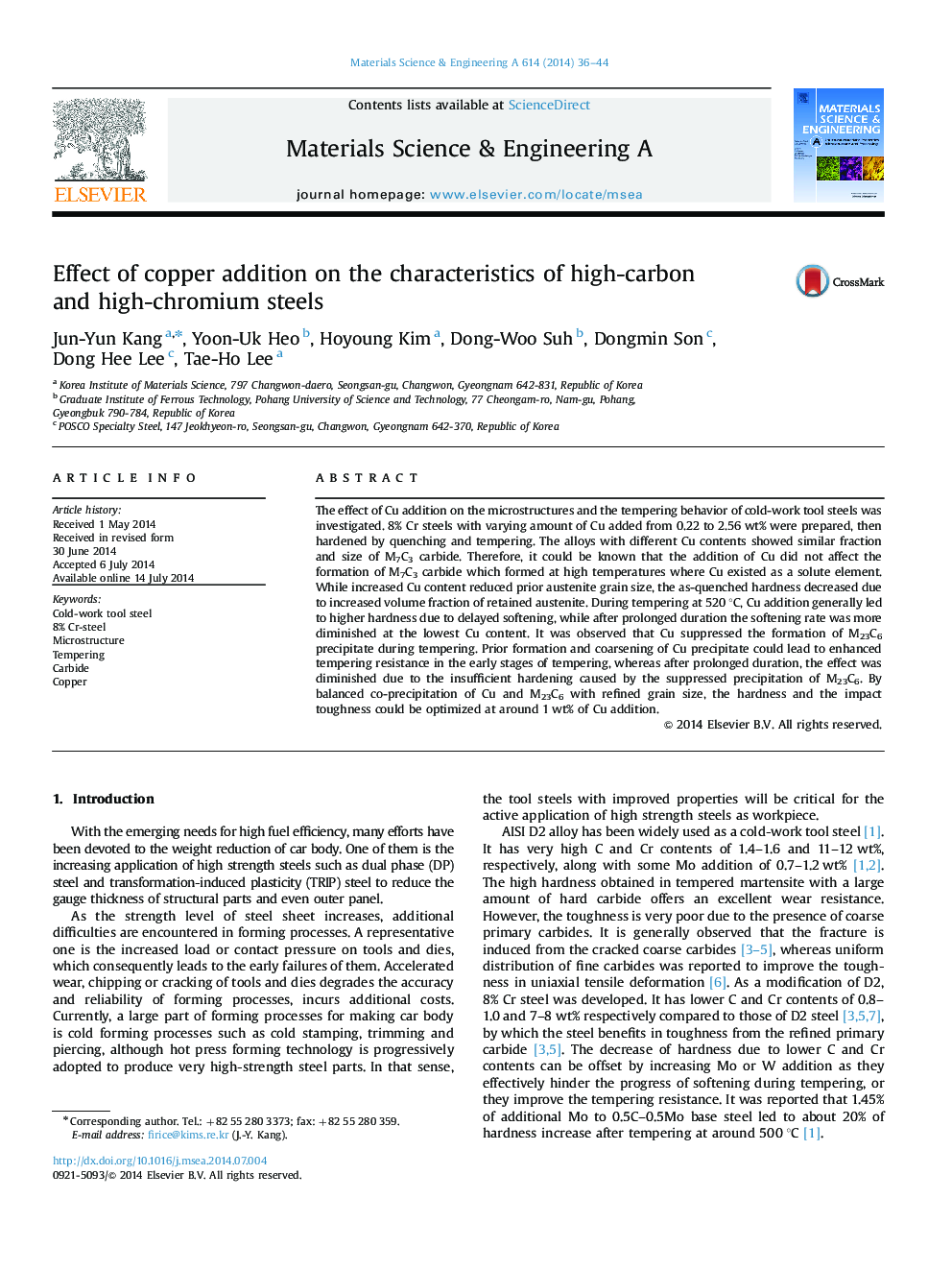| Article ID | Journal | Published Year | Pages | File Type |
|---|---|---|---|---|
| 1574842 | Materials Science and Engineering: A | 2014 | 9 Pages |
Abstract
The effect of Cu addition on the microstructures and the tempering behavior of cold-work tool steels was investigated. 8% Cr steels with varying amount of Cu added from 0.22 to 2.56 wt% were prepared, then hardened by quenching and tempering. The alloys with different Cu contents showed similar fraction and size of M7C3 carbide. Therefore, it could be known that the addition of Cu did not affect the formation of M7C3 carbide which formed at high temperatures where Cu existed as a solute element. While increased Cu content reduced prior austenite grain size, the as-quenched hardness decreased due to increased volume fraction of retained austenite. During tempering at 520 °C, Cu addition generally led to higher hardness due to delayed softening, while after prolonged duration the softening rate was more diminished at the lowest Cu content. It was observed that Cu suppressed the formation of M23C6 precipitate during tempering. Prior formation and coarsening of Cu precipitate could lead to enhanced tempering resistance in the early stages of tempering, whereas after prolonged duration, the effect was diminished due to the insufficient hardening caused by the suppressed precipitation of M23C6. By balanced co-precipitation of Cu and M23C6 with refined grain size, the hardness and the impact toughness could be optimized at around 1 wt% of Cu addition.
Related Topics
Physical Sciences and Engineering
Materials Science
Materials Science (General)
Authors
Jun-Yun Kang, Yoon-Uk Heo, Hoyoung Kim, Dong-Woo Suh, Dongmin Son, Dong Hee Lee, Tae-Ho Lee,
